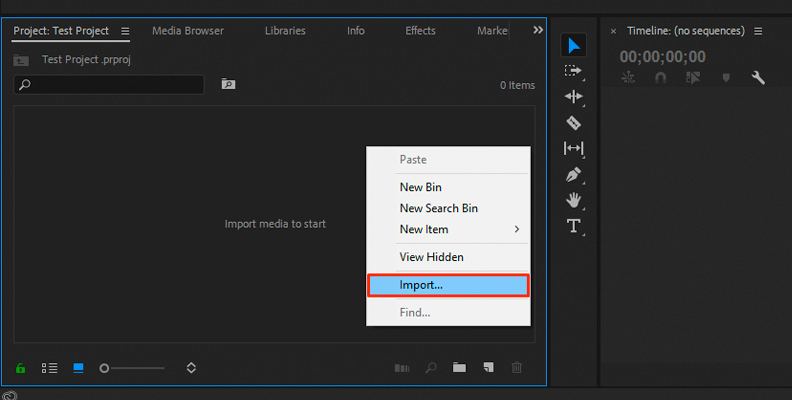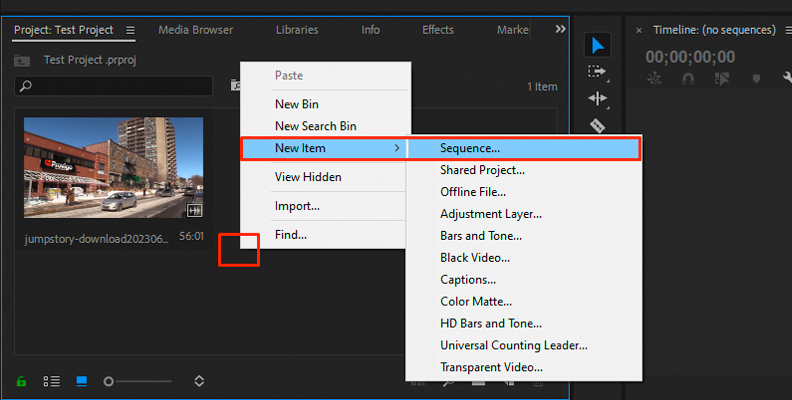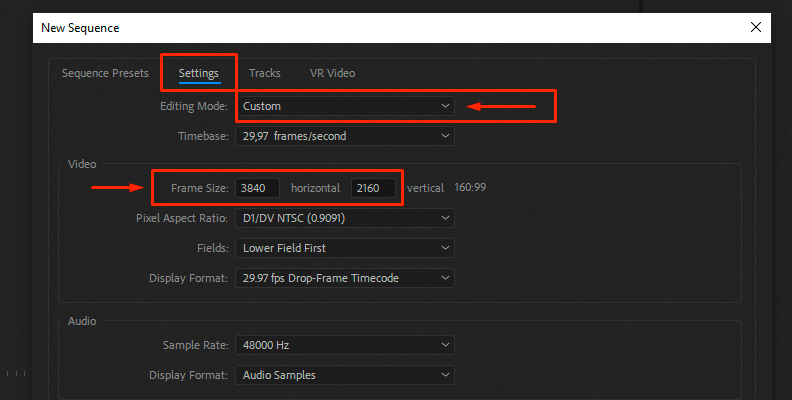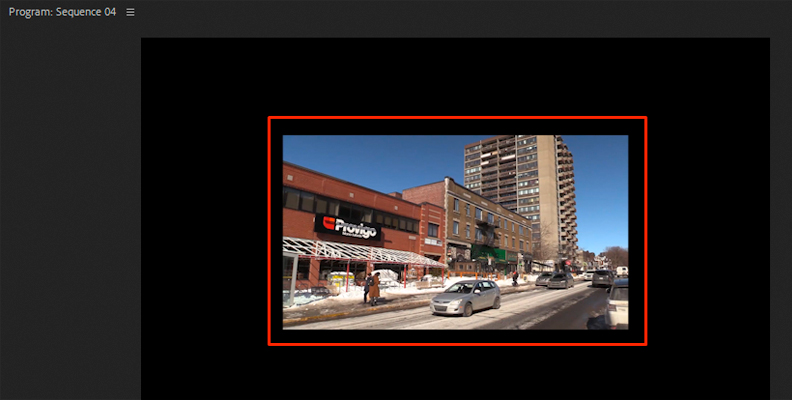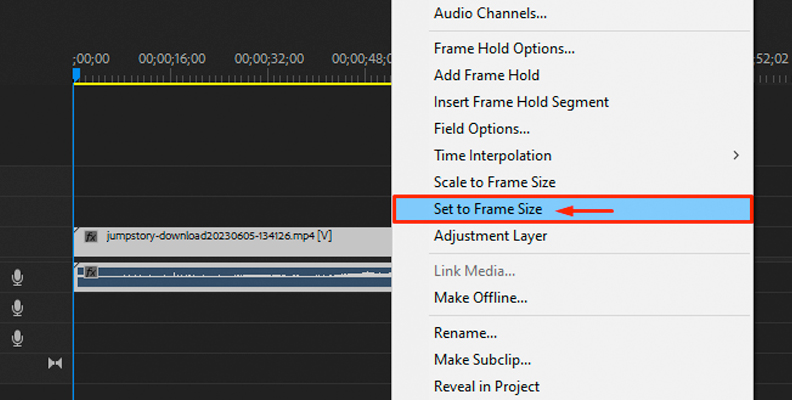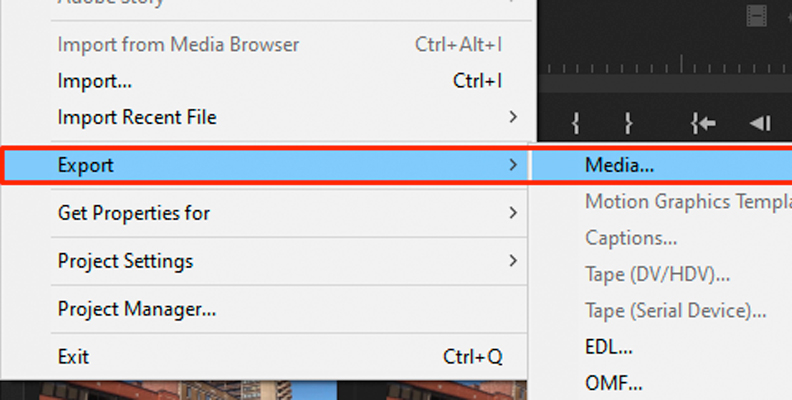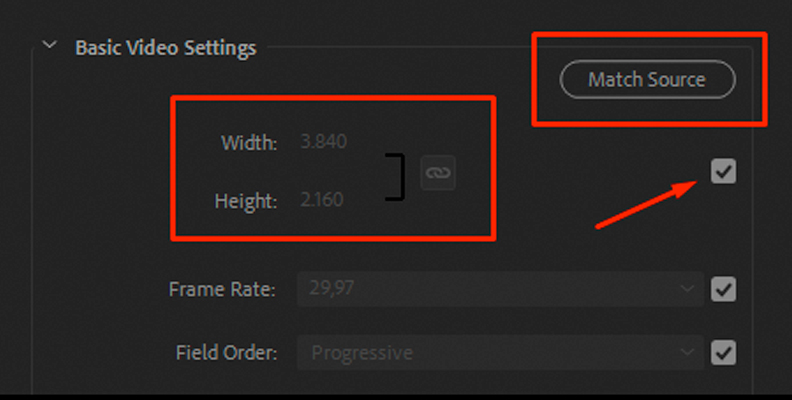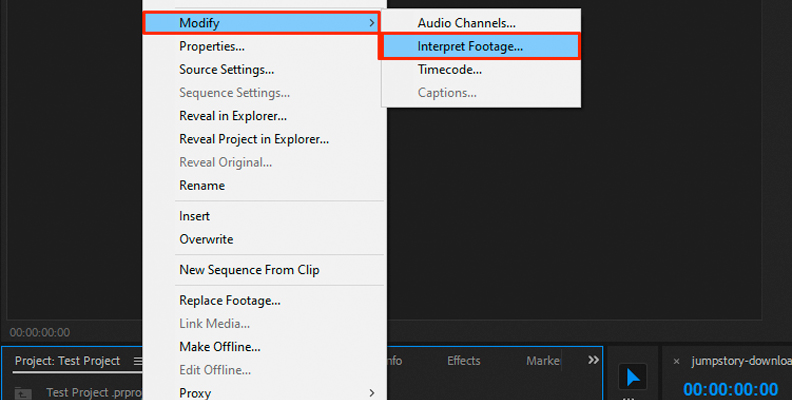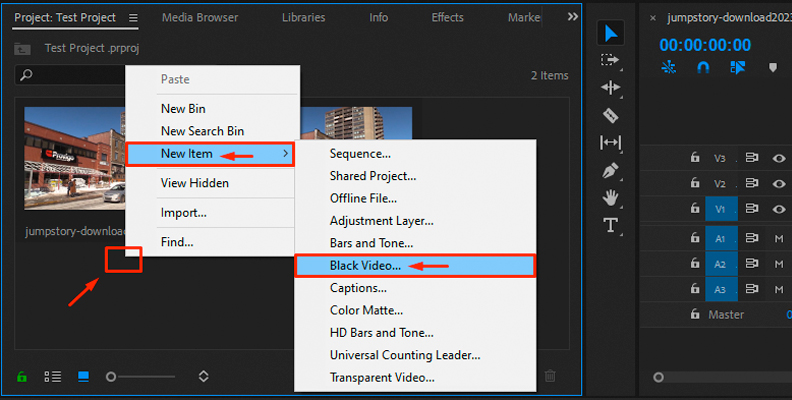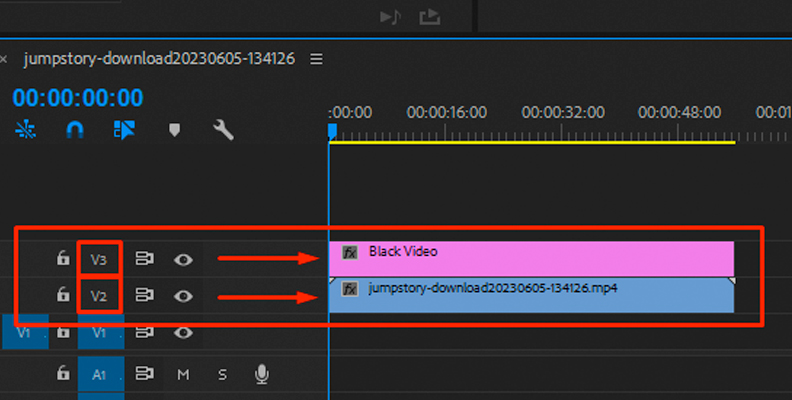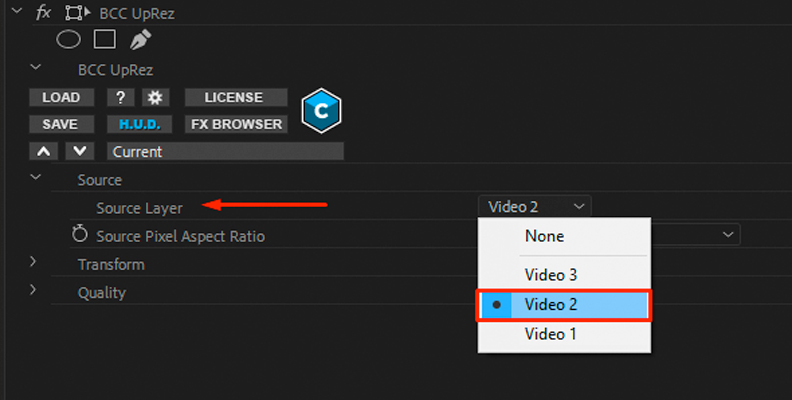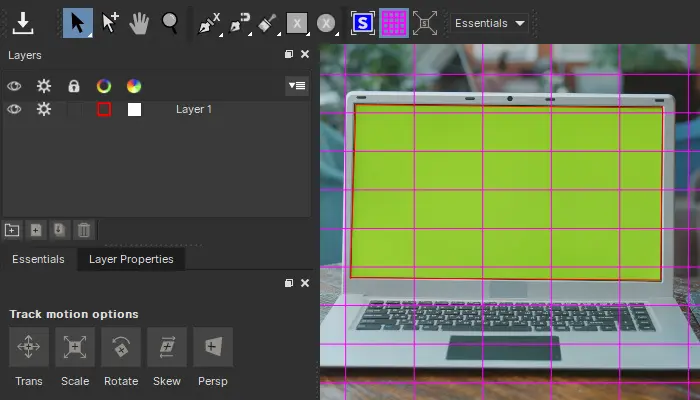Acquiring footage that matches your project's theme and importing it in Adobe Premiere Pro only to find out that it's blurry and not the intended video resolution can be disappointing, but unfortunately, happens quite often in the video editing world.
Luckily, we have video upscaling software integrated into modern workspaces like Adobe Premiere Pro that can help us save video clips through detail-preserving upscale methods.
Suppose you came back from a recording session with a low-resolution video, and are simply looking for a way to make it crisp and more fitting for today's standards (like "reviving old footage" is common). In that case, this tutorial should help you out.
So, without further ado, here's what you need to know to upscale video(s) in Adobe Premiere.
How to Upscale Video in Premiere Pro
To upscale a video in Premiere, there are a few available approaches. However, we believe that the "sequence settings" method is both easier and better.
Here's what you need to do to properly upscale a video in Premiere using this method.
-
Step 1: Import Media in Premiere
First, we recommend creating a new project, as working on an already-existing one can cause some unwanted changes. So, try this method in a new, empty project.
Once you open the project, import the clip you wish to upscale within Premiere using the "Import" option, as shown in the image below.
![how to upscale video in premiere pro]()
-
Step 2: Create a Sequence with Desired Resolution
Now that the clip is imported into Premiere, you need to create a new sequence with the target video resolution you wish to upscale to. For example, we've imported a 1080p clip that we'll upscale to 4K, so in this case, we need to create a new sequence with a 4K video resolution.
To do this, right-click an empty area within your "Project" panel, then choose "New Item" and click on the "Sequence" option.
![]()
Now, you'll see the "New Sequence" panel on your screen, and all you have to do is make a few changes.
After selecting your desired preset in the "Sequence Presets" panel (you can leave it as default as well), click on the "Settings" tab to switch to that panel.
In the "Editing Mode" field, set the preset to "Custom" which will allow you to manually input a desired video resolution. Before you do this, the "Frame Size" option under the "Video" section will be greyed-out and you won't be able to change it.
Now, simply set the "Frame Size" value to the size you wish to upscale your video to, which in our case is 3840x2160, resulting in what we call 4K, or Ultra-HD (UHD).
![]()
Rename your sequence (or leave it as default) and click the "OK" button at the bottom.
You've now created a 4K sequence.
-
Step 3: Add Clip to Sequence and Use "Set to Frame Size" Option
Now that the sequence is created, drag and drop the video footage you previously imported over your 4K sequence.
At first, you'll notice that it doesn't fill up the preview frame at all, and there are black elements showing. This is because your current video is 1080p, and in a 4K sequence, it's not large enough to cover it. But, we'll fix this in just a second.
![]()
Right-click the video clip on your timeline and choose the "Set To Frame Size" option.
![]()
Now, all that's left to do is to export the video as 4K.
To do that, click on "File" in the top-left corner of Premiere, then use your cursor to hover over "Export" and click on the "Media" option.
![]()
In the Export panel that will open, choose your format (keep in mind that some don't allow changing the resolution manually) and export the video as 4K.
In the "Basic Video Settings" panel, you can click the "Match Source" button and see if everything matches the video source settings. It should be automatically set to 4K, as the sequence we created earlier had the 4K resolution.
If you wish to change the resolution manually, untick the grey box shown in the image below, and that will "unlock" the section and allow you to change the numbers.
![]()
That's how to upscale 1080p to 4K video clips in Adobe Premiere Pro, or any other original video size (source resolution) to a specific target (upscale) resolution, but once again, keep in mind that "the bigger the jump," the worse the quality.
How to Upscale Video in Premiere Pro with UpRez - Continuum (Boris FX)
You can "turn" an HD video into a UHD video using UpRez by Boris FX. UpRez is a plugin that's part of Continuum by Boris FX, available for all popular video editing hosts like After Effects, VEGAS Pro, and of course, Adobe Premiere Pro.
You can download a free trial version of this back on the official Boris FX website. After downloading and installing the Continuum pack, re-open Premiere Pro and follow these steps.
-
Step 1: Import Video in Premiere Pro and Create a Sequence
Like in the previous method, the first step is to import the video material you wish to upscale within Adobe Premiere Pro. You can use the "drag and drop" method as that one is the easiest.
Now, create a sequence by right-clicking an empty area within the "Project" panel and choosing New Item -> Sequence.
In the "Settings" tab, change the editing mode to "Custom" and type in your custom resolution. You can use this method for multiple videos with the same resolution that you wish to upscale.
Use the "Reinterpret" feature to ensure that the aspect ratio of the clip you wish to upscale matches the aspect ratio of your sequence. To do this, right-click the clip within the "Project" tab, then choose "Modify" and click on the "Interpret Footage" option.
![]()
In the "Pixel Aspect Ratio" field, make sure that you type in the correct values to match the aspect ratio of the sequence. To finalize, click the OK button.
-
Step 2: Create a Black Video Slug
Now you need to create a black video slug. In Premiere Pro, this is very simple to do.
Right-click an empty area within the "Project" panel, then choose "New Item" and click on the "Black Video" option.
![]()
Now, place the black video slug you just created on video track number 3, and your original clip (that you wish to upscale) on video track number 2.
![]()
-
Step 3: Apply the UpRez Filter
Open the "Effects" panel and search for "UpRez" using the search bar function. Once you find the effect under the "BCC Image Restoration" category, drag and drop it over the black video, not your original clip.
Now, click on the black video with the effect applied, then open the "Effect Controls" panel. Set the "Source Layer" to Video 2, and the "Source Pixel Ratio" to a value that matches the true source aspect ratio of the clip you wish to upscale. In the "Transform" category, set the "Frame Size" to the "Layer Size" setting.
![]()
-
Step 4: Adjust Desired Quality Settings
The last thing you need to do is open the "Quality" section and choose your preferred settings. A good recommended starting point is to set the "Method" to "Magic Sharp" and the "Sharpness" to 25, then adjust from there, depending on the results. Render and export the video.
Final Words
That's all you need to know for upscaling a video in Adobe Premiere Pro.
It's a process that may save the day when done with professional plug-ins or premium detail-preserving upscale AI software, but there is no "magic tool" that can turn a really pixelized video into crystal-clear footage.
Hopefully, this will help you in the future, as the need to upscale video(s) is present almost on a daily basis when working as a video editor.
FAQ
This section contains some of the most frequently asked questions on video upscaling topics. If anything is still unclear after reading this guide, you should be able to find the answers in the following sections.
What is Upscaling Video?
To "upscale video material" essentially means to increase its resolution so it can "fit" on high-resolution devices, like 4K or 8K TVs, for example.
If you have a 720p video, upscaling would mean virtually enhancing its native resolution to 1080p (Full HD) or sometimes even more.
However, the more you "force" the upscaling, the higher the chances of seeing unwanted results. Trying to upscale a 480p video to 4K is almost impossible to do, whereas 1080p to 4K is much easier, as the difference in quality isn't that extreme.
What is The Best Way to Upscale Video in Premiere Pro?
The best way to upscale a video in Premiere Pro is by taking the "sequence approach" mentioned earlier in this guide. This means creating a 4K sequence and "dropping" a 1080p video in it, if you wish to upscale from 1080p (FHD) to 4K (UHD). The same applies to 480p to 720p, etc...
A good reason why this is better than simply increasing the values in the "Export" panel is that text and graphics will remain native and won't "morph" in the final result.
Can Upscaling Improve the Quality of My Video?
Upscaling can improve the quality of your video. However, a video with a higher native resolution will always look better and contain more detail.
You can take a 1080p video and export it as 2160p, and it could (not always) look a bit better compared to the same video being exported in 1080p due to the higher bitrate. But if you compare it to a video recorded natively in a 2160p resolution, that one will always look better.
What Should I Choose in Sequence Settings?
In sequence settings, as shown in the method above, you should set the resolution that you wish to upscale your video to, also referred to as the "Target Resolution".
So, if you wish to do a 480p upscale to 720p, set the sequence settings to 720p. If you wish to do 1080p to 4K, as we did in the example shown above, set the resolution to 4K, which is 3840x2160.
You should also set the editing mode to "Custom" as that will allow you to change resolutions manually.
What Does it Mean to Increase Video Resolution?
Increasing video resolution means increasing the number of pixels the footage is made of. However, this is impossible without sophisticated video upscaling software that can re-generate the footage without causing any unwanted effects, and even then, it won't be perfect.
Premiere Pro can do this to some degree, and After Effects is also known for its detail-preserving upscale algorithm that can turn a low-resolution video into something much "crispier".
Another well-known program that can upscale footage well is the Topaz Video Enhance AI by Topaz Labs.





